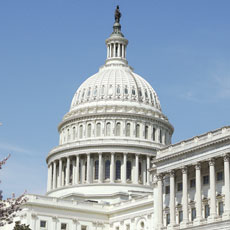
A bill that would delay the 2023 home health rule from taking effect is not likely to pass Congress, according to National Association for Home Care & Hospice President and CEO Bill Dombi.
“We are dealing with a very tough time for legislation to move forward given that Congress is in session only a few more weeks and those weeks include a recess for the Thanksgiving holiday time period, as well as an election and the potential that we are dealing with a serious change of who is in power,” Dombi told NAHC members Friday during a webinar.
The Preserving Access to Home Health Act of 2022 introduced in the House and Senate last summer would prevent the Centers for Medicare & Medicaid Services from making a controversial rate -7.85% rate adjustment until 2026. Although Dombi was not optimistic about that bill, he remained hopeful something could be included in omnibus legislation at the end of the year that would address the final rule.
“We have been in close contact with our congressional allies telling them now that the issue shifts to their hands,” Dombi said.
The home health rule has roiled the industry since CMS announced it early last week. It would phase in the -7.85% behavioral adjustment, with a 3.925% rate cut costing providers $635 million in calendar year 2023. The remainder of the cut would come later. However, CMS also threw a bone of sorts to home health agencies. It increased Medicare home health payments overall by 0.7%, or $125 million, next year instead of cutting them 4.2% as it had proposed earlier, thanks to a healthy market-basket increase. Some agencies applauded the move.
“While not the ideal outcome, [Monday’s] release of the CY 2023 Home Health Final Rule is a welcomed improvement over what was proposed by CMS this summer in regard to the overall payment update for next year,” Amedisys Inc. said in a statement.
Dombi criticized Amedisys’ assessment, saying it is making it harder for him to lobby Washington lawmakers.
“That has helped position Congress into thinking we will not have to do anything because [home health] is going to get more money in 2023 than they got in 2022,” Dombi explained. “But we know the reality is a lot different than that. You can’t have a $125 million increase in home health and accommodate all of the cost increases that have occurred in 2022.”
The final home health rule also included a 5% cap on negative wage index changes to reflect yearly changes in workforce costs, a 4% market-basket update pegged to inflation, and recalibration of each of the 432 payment groups under the Patient-Driven Groupings Model. Dombi warned the recalibration of case-mix weights could negatively affect some agencies.
“For every case-mix weight that goes up, there is a case-mix weight that is going to go down,” Dombi said. “This really is important to the smaller agencies where you don’t have a balance of all 432 case mix categories.”



